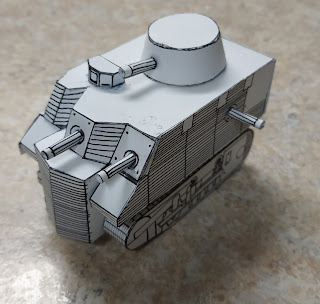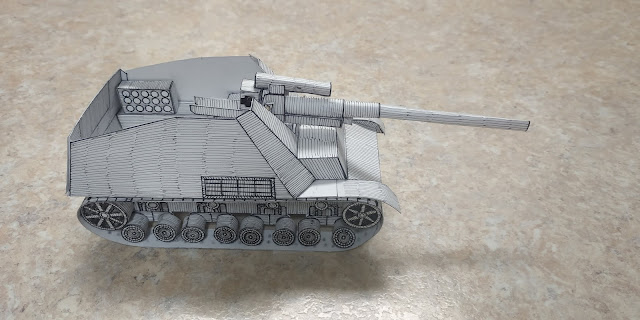Apocalypse Tank - Papercraft (Super Heavy Tank) Command & Conquer Red Alert 2

The Apocalypse tank was a largely updated and refined version of the earlier Mammoth tank and was the signature Soviet super heavy tank in both iterations of the Third World War. It was described by Zofia as a "war in a can". It possessed a pair of powerful cannons effective against both vehicles and structures, and was capable of eliminating light vehicles with a single volley. The Apocalypse also featured dual Mammoth Tusk missile launchers, effective against enemy aircraft. Like the Mammoth tank, the Apocalypse was designed to go toe-to-toe with any enemy unit, and emerge the last unit standing. The tank itself is much larger and slower than the Grizzly and Rhino tanks, but also much more powerful, doing more than twice the damage of the Rhino with its twin cannons. In addition to its cannons, the Apocalypse also features a pair of anti-air missile launchers. Although these missile launchers are slow to fire, they are significantly more powerful than other anti-air missile





